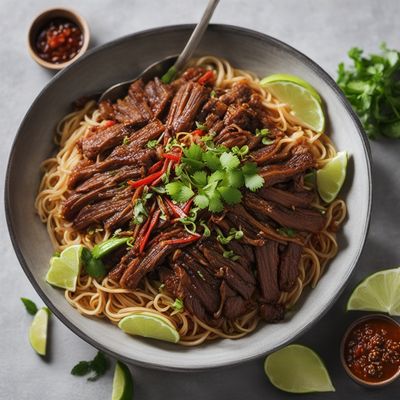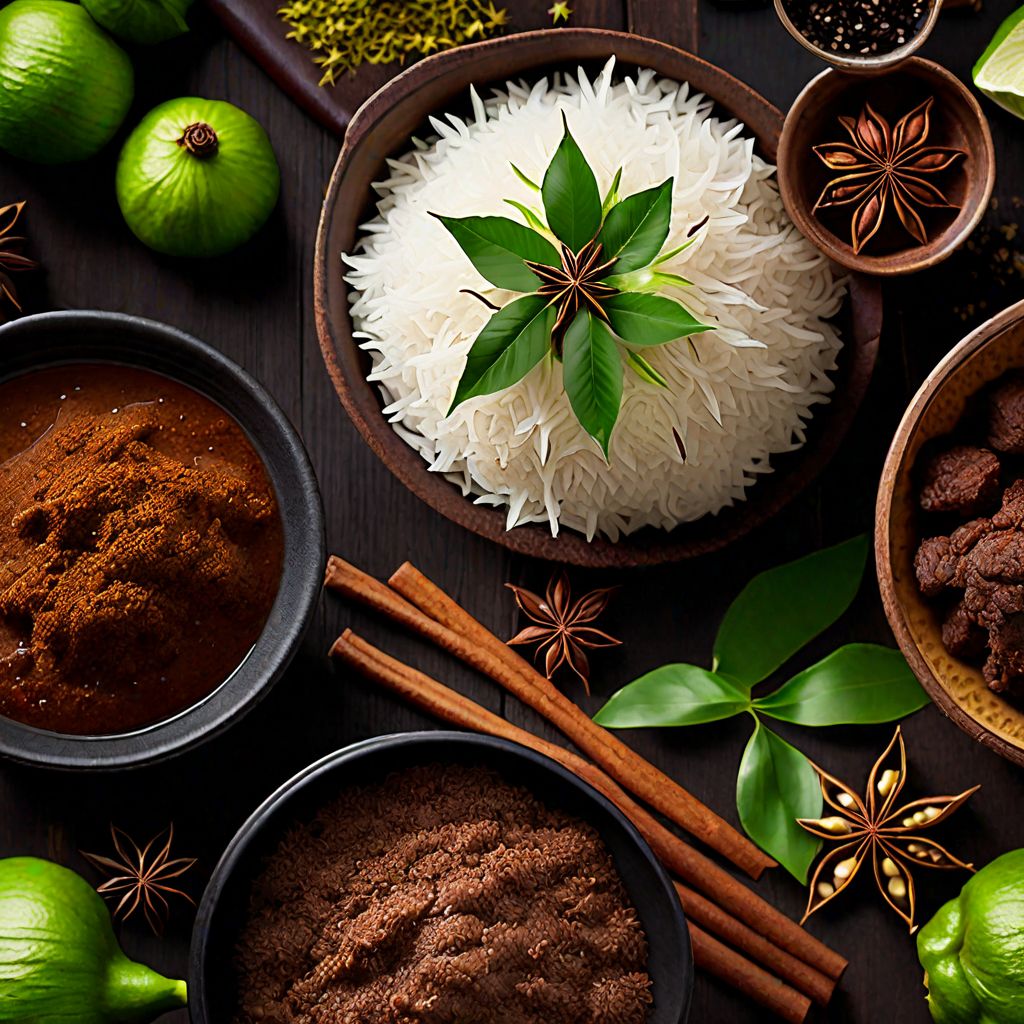
Recipe
Korean-style Beef Rendang
Gochujang-infused Beef Rendang: A Spicy Korean Twist on a Classic Indonesian Dish
4.6 out of 5
In Korean cuisine, bold flavors and spicy elements are highly valued. This Korean-style Beef Rendang recipe combines the rich and aromatic Indonesian dish with the fiery kick of gochujang, a fermented chili paste. The result is a mouthwatering fusion of flavors that will tantalize your taste buds.
Metadata
Preparation time
20 minutes
Cooking time
2-3 hours
Total time
2 hours 20 minutes - 3 hours 20 minutes
Yields
4 servings
Preparation difficulty
Medium
Suitable for
Gluten-free, Dairy-free, Nut-free, Low-carb, Keto-friendly
Allergens
N/A
Not suitable for
Vegan, Vegetarian, Paleo, Pescatarian, Halal
Ingredients
While the original Indonesian Rendang is slow-cooked with a blend of aromatic spices, the Korean adaptation incorporates gochujang, a staple ingredient in Korean cuisine. This addition adds a spicy and slightly sweet flavor profile to the dish, giving it a unique twist. We alse have the original recipe for Rendang, so you can check it out.
-
500g (1.1 lb) beef, thinly sliced 500g (1.1 lb) beef, thinly sliced
-
2 tablespoons vegetable oil 2 tablespoons vegetable oil
-
1 onion, finely chopped 1 onion, finely chopped
-
4 cloves garlic, minced 4 cloves garlic, minced
-
2 tablespoons grated ginger 2 tablespoons grated ginger
-
2 tablespoons gochujang paste 2 tablespoons gochujang paste
-
1 tablespoon soy sauce 1 tablespoon soy sauce
-
1 tablespoon brown sugar 1 tablespoon brown sugar
-
1 cup coconut milk 1 cup coconut milk
-
2 kaffir lime leaves 2 kaffir lime leaves
-
1 cinnamon stick 1 cinnamon stick
-
1 star anise 1 star anise
-
Salt, to taste Salt, to taste
Nutrition
- Calories (kcal / KJ): 400 kcal / 1674 KJ
- Fat (total, saturated): 25g, 12g
- Carbohydrates (total, sugars): 5g, 2g
- Protein: 40g
- Fiber: 1g
- Salt: 1.5g
Preparation
-
1.Heat the vegetable oil in a large pan over medium heat.
-
2.Add the chopped onion, minced garlic, and grated ginger. Sauté until fragrant and the onion becomes translucent.
-
3.Add the thinly sliced beef to the pan and cook until browned.
-
4.In a small bowl, mix together the gochujang paste, soy sauce, and brown sugar. Add this mixture to the pan and stir well to coat the beef.
-
5.Pour in the coconut milk and add the kaffir lime leaves, cinnamon stick, and star anise. Stir to combine.
-
6.Reduce the heat to low and simmer for 2-3 hours, or until the beef is tender and the sauce has thickened. Stir occasionally to prevent sticking.
-
7.Season with salt to taste.
-
8.Serve the Korean-style Beef Rendang hot with steamed rice.
Treat your ingredients with care...
- Beef — For the best results, choose a tender cut of beef such as sirloin or ribeye. Thinly slice the beef against the grain to ensure tenderness.
- Gochujang paste — Adjust the amount of gochujang according to your spice preference. Add more for extra heat or reduce for a milder flavor.
- Coconut milk — Use full-fat coconut milk for a creamy and rich texture in the sauce.
Tips & Tricks
- To enhance the flavor, marinate the beef in the gochujang mixture for 1-2 hours before cooking.
- If you prefer a thicker sauce, simmer the dish uncovered for the last 30 minutes of cooking.
- Garnish with sliced green onions and toasted sesame seeds for added freshness and crunch.
Serving advice
Serve the Korean-style Beef Rendang with steamed rice and a side of kimchi for a complete and satisfying meal.
Presentation advice
Arrange the beef slices on a bed of steamed rice and drizzle the thickened sauce over the top. Garnish with sliced green onions and toasted sesame seeds for an attractive presentation.
More recipes...
For Rendang » Browse all
For Indonesian cuisine » Browse all
For Korean cuisine » Browse all
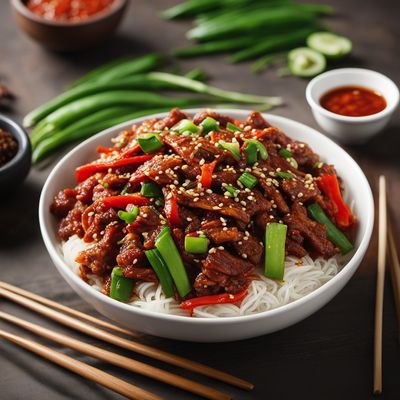
Spicy Korean Pork Stir-Fry
Fiery Pork Delight: A Spicy Twist on Korean Cuisine
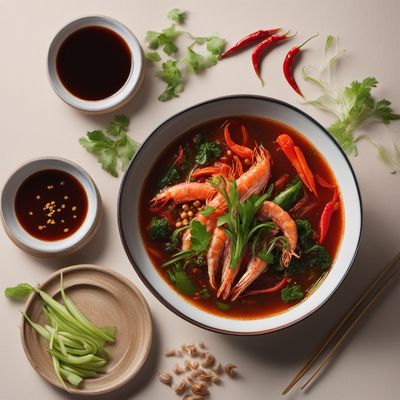
Spicy Seafood Soup with Fermented Skate, Honghap Tang
Fiery Delight: A Spicy Seafood Soup Infused with the Essence of Fermented Skate
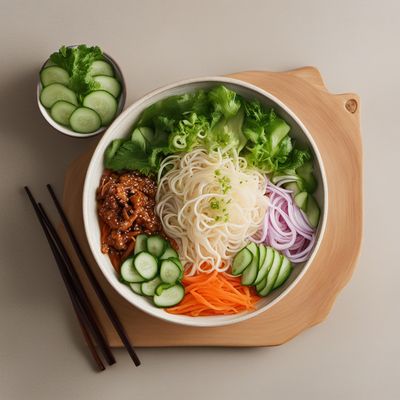
Refreshing Korean Cold Noodle Salad
Chilled Delight: A Vibrant Twist on Korean Jaengban Guksu
More Indonesian cuisine dishes » Browse all

Soto kaki
Chicken soup with peanuts
Soto kaki is a traditional Indonesian soup made from chicken feet, vegetables, and spices. It is a flavorful and aromatic dish that is often...
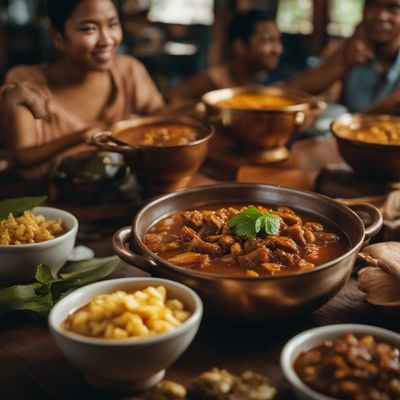
Gudeg Yogya
Young Jackfruit Stew
Gudeg Yogya is a traditional Javanese dish made with young jackfruit and coconut milk. It is a popular dish in the Yogyakarta region of Indonesia...
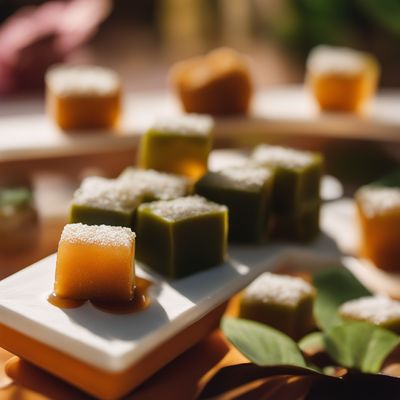
Dodol
Dodol is a traditional Indonesian sweet treat that is made from coconut milk and palm sugar. It has a chewy texture and a sweet, caramel-like flavor.
More Korean cuisine dishes » Browse all
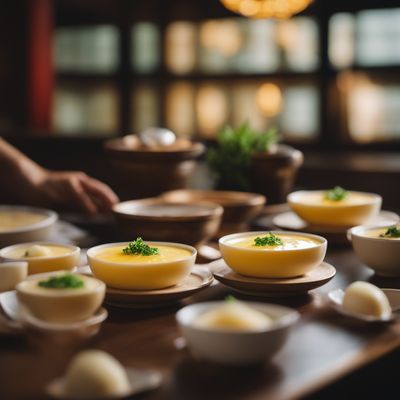
Gyeran jjim
Korean steamed egg custard
Gyeran jjim is a Korean dish that is made with eggs and vegetables. It is a healthy and flavorful dish that is perfect for breakfast or lunch.

Guljeon
Korean-style Oysters
Guljeon is a traditional Korean seafood pancake that is made with fresh oysters and scallions. This dish is crispy on the outside and soft on the...

Naengmyeon
Cold buckwheat noodles soup
Naengmyeon is a Korean cold noodle dish that is perfect for hot summer days. The dish consists of thin, chewy noodles made from buckwheat, potato,...







